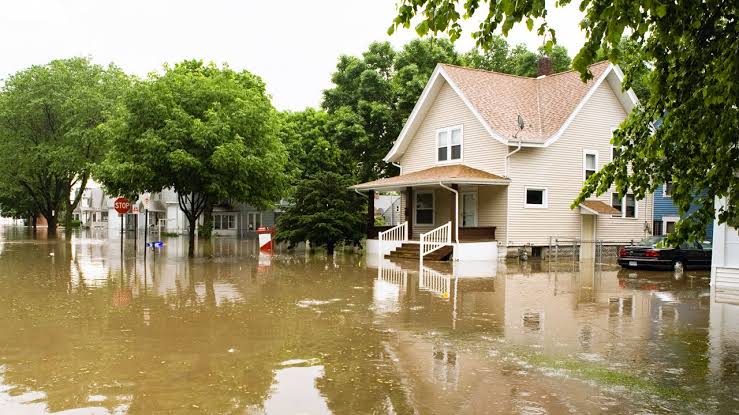Rain and flooding events have been on the rise, with devastating consequences for communities around the world.
As climate change intensifies, it is crucial to equip ourselves with the knowledge and resources needed to survive these disasters.
In this comprehensive guide, we will explore effective strategies and measures to help you navigate through the challenges of a devastating rainstorm and subsequent flooding.
By being prepared and proactive, you can increase your chances of staying safe and minimizing the impact on your life.
Understanding the Threat
Devastating rain and flooding occur as a result of various factors, including heavy rainfall, inadequate drainage systems, or river overflow.
The characteristics of such disasters include rapidly rising water levels, strong currents, and potential structural damage.
The risks associated with these events include drowning, electrocution, contamination of water sources, and the destruction of homes and infrastructure.
Understanding the nature of the threat is the first step toward effectively preparing for and surviving such disasters.
Preparedness Measures
To ensure your safety during a devastating rainstorm and subsequent flooding, it is crucial to take proactive measures and be prepared.
Here are some essential steps you can take:
Develop an Emergency Plan
Creating a well-thought-out emergency plan is vital to ensure the safety of yourself and your loved ones. Consider the following:
1. Establish communication methods and emergency contacts:
Identify reliable means of communication with family members, friends, and local authorities.
Share emergency contact numbers and establish a communication plan in case of separation.
2. Identify evacuation routes and safe locations:
Research and map out the safest evacuation routes from your area.
Identify nearby shelters or higher ground locations that can offer temporary refuge during a flood.
Create an Emergency Kit
An emergency kit is a crucial resource that can sustain you during and after a disaster. Ensure your kit includes the following:
1. Essential supplies:
Pack non-perishable food items, drinking water (at least one gallon per person per day), medications, and a first aid kit.
Consider any specific dietary or medical needs.
2. Necessary tools:
Include items such as flashlights, extra batteries, a battery-powered or hand-cranked radio, a multi-purpose tool, and a whistle.
These tools can be invaluable in navigating through the challenges of a disaster.
Secure Your Property
Protecting your property from the impact of flooding can help mitigate potential damage.
Take the following steps:
1. Clear gutters and drains:
Regularly clear debris from gutters and drains to prevent blockages that can lead to overflowing water.
2. Install flood barriers or sandbags:
If your area is prone to flooding, consider installing flood barriers or using sandbags around vulnerable entry points, such as doors and windows.
3. Elevate important appliances and valuables:
Raise electrical appliances, furniture, and important documents to higher ground to minimize potential damage caused by floodwaters.
During the Rain and Flooding
Staying informed and making the right decisions during a devastating rainstorm and flooding can be life-saving.
Here’s what you should do:
Stay Informed
Keep yourself updated with the latest information and instructions:
1. Listen to weather forecasts and updates:
Tune in to local news channels or radio stations for accurate and timely weather reports.
2. Follow instructions from local authorities:
Pay close attention to evacuation orders or any other directives issued by local emergency services.
Evacuation
If authorities advise evacuation, take immediate action:
1. Follow designated evacuation routes:
Use the routes identified by local authorities and avoid shortcuts, as they may pose additional risks. In Nigeria, our version of 911 is 112 not “ara adugbo e gbami.”
2. Take your emergency kit and important documents:
Gather your emergency kit, important documents (such as identification and insurance papers), and any essential personal items before leaving.
Personal Safety
Your safety should be your top priority during a rainstorm and flooding:
1. Avoid walking or driving through floodwaters:
Even shallow-looking water can hide significant hazards, such as submerged objects or fast currents.
It’s best to stay away.
2. Stay away from downed power lines and electrical sources:
Electricity and water can be a lethal combination.
Maintain a safe distance from electrical hazards.
3. Seek higher ground and avoid low-lying areas:
If you’re unable to evacuate, move to higher ground and avoid areas prone to flooding.
After the Rain and Flooding
Once the rain subsides and floodwaters recede, the recovery process begins.
Here’s what you need to do:
Assess the Situation
Before returning home or venturing outside, it’s essential to assess the situation:
1. Wait for official announcements:
Only return home when authorities declare it safe to do so.
2. Check for potential hazards:
Be cautious of any structural damage to your property, such as weakened foundations or collapsed walls.
Additionally, beware of contaminated water sources that may pose health risks.
Recovery and Cleanup
To start the recovery process and ensure your well-being:
1. Document the damage:
Take photographs or videos of the damage for insurance purposes.
This evidence will help streamline the claims process.
2. Remove standing water and initiate drying processes:
Safely drain any remaining water from your property.
Open windows and use fans or dehumidifiers to facilitate drying and prevent mold growth.
3. Dispose of damaged items properly:
Properly discard items that have been severely damaged by floodwaters. Follow local guidelines for disposal.
Emotional Support
Recovering from a devastating rainstorm and flooding can take an emotional toll.
Remember to:
1. Reach out to support networks:
Lean on friends, family, or support groups for emotional assistance and guidance during the recovery process.
2. Seek professional help if necessary:
If you find yourself struggling with the emotional aftermath of the disaster, don’t hesitate to seek professional help from counselors or therapists.
Long-Term Preparedness
Incorporating long-term preparedness measures can help you better withstand future rain and flooding events:
Learn from the Experience
Evaluate your experience and make improvements:
1. Assess the effectiveness of your emergency plan and kit:
Identify any shortcomings or areas for improvement and make the necessary adjustments.
2. Reflect on the response and recovery process:
Note any challenges or lessons learned that can inform your preparedness for future events.
Mitigation Measures
Take proactive steps to mitigate the impact of future flooding:
1. Consider flood insurance:
Determine if flood insurance is available for your property. It can provide financial protection in case of future flood-related damages.
2. Implement flood-resistant modifications:
Consult with professionals about implementing flood-resistant measures, such as elevating electrical systems or installing flood-resistant doors and windows.
Community Involvement
Support and participate in community initiatives for flood preparedness:
1. Join local flood preparedness and awareness initiatives:
Engage with community organizations or government agencies working to improve flood prevention, early warning systems, and emergency response.
2. Advocate for improved infrastructure:
Support community efforts to enhance drainage and flood control systems.
Collaborative actions can contribute to a more resilient community as a whole.
Final Words on How to Survive Devastating Rain and Flooding
Surviving a devastating rainstorm and flooding requires proactive preparedness, quick thinking, and resilience.
By understanding the threat, developing an emergency plan, and staying informed, you can increase your chances of staying safe during the event.
Remember to prioritize personal safety, take necessary precautions, and seek support during the recovery process.
Long-term preparedness measures, such as learning from the experience and getting involved in community initiatives, can help build a more resilient future.
With these strategies in place, you can navigate through the challenges of rain and flooding, ultimately safeguarding yourself and your loved ones.
Stay safe, stay prepared, and face nature’s fury with strength and resilience.
We earlier discussed how electric bicycles work and how to implement appropriate safety measures, such as adult supervision, proper education, and protective gear, to ensure the safety of children.








